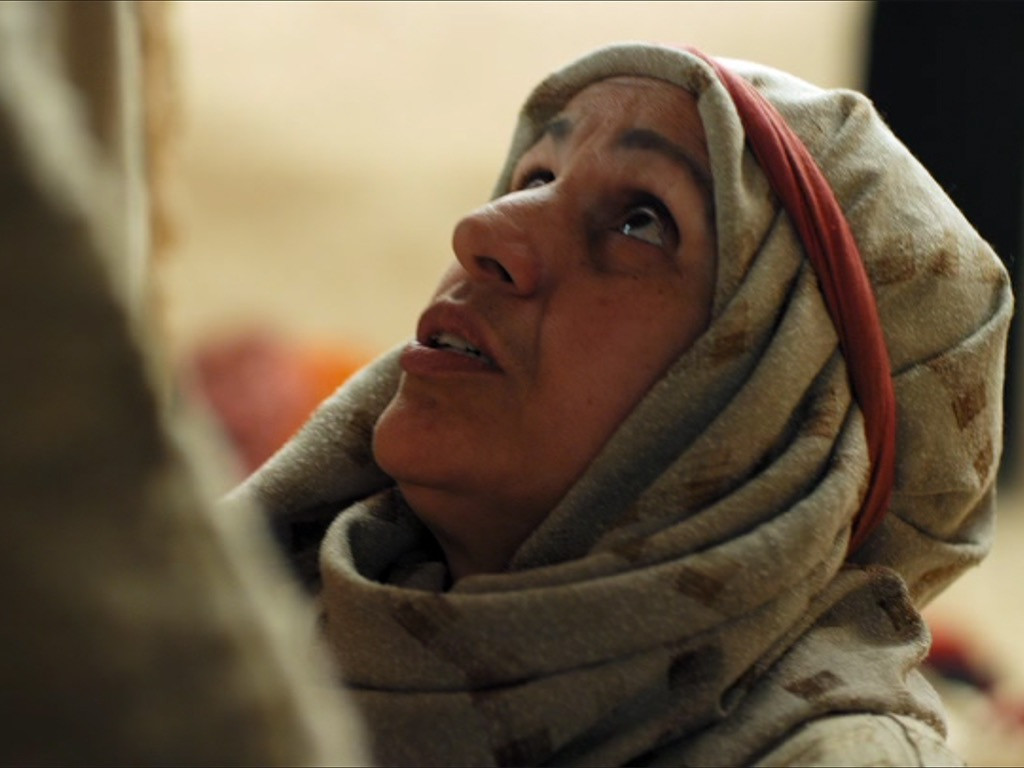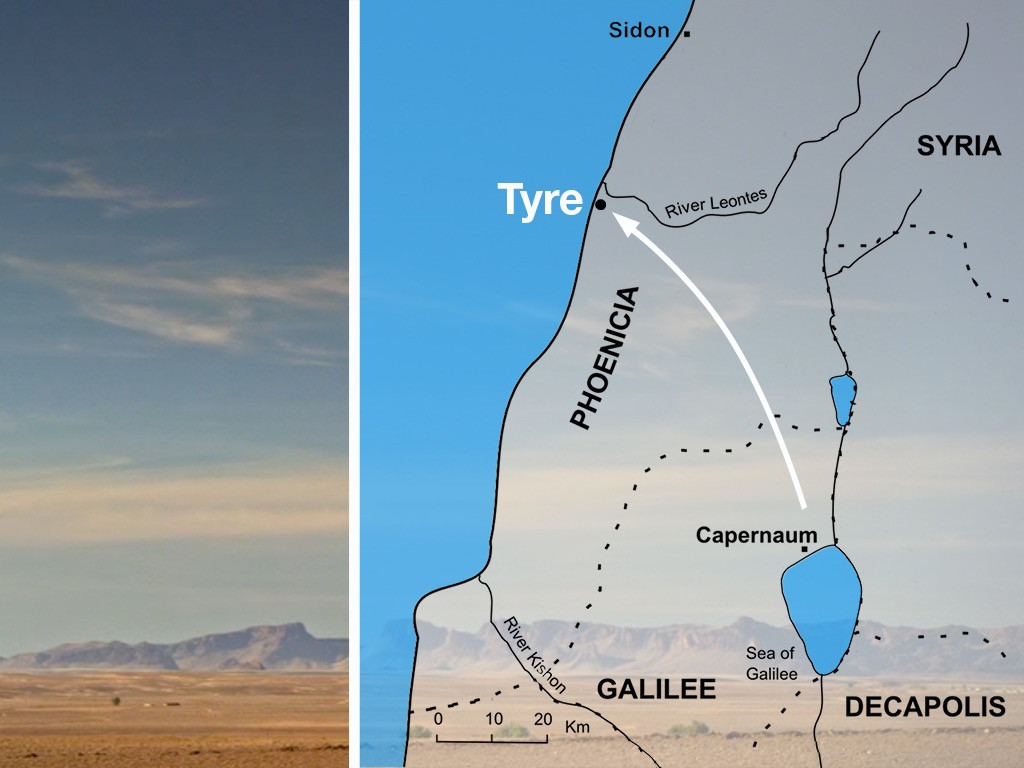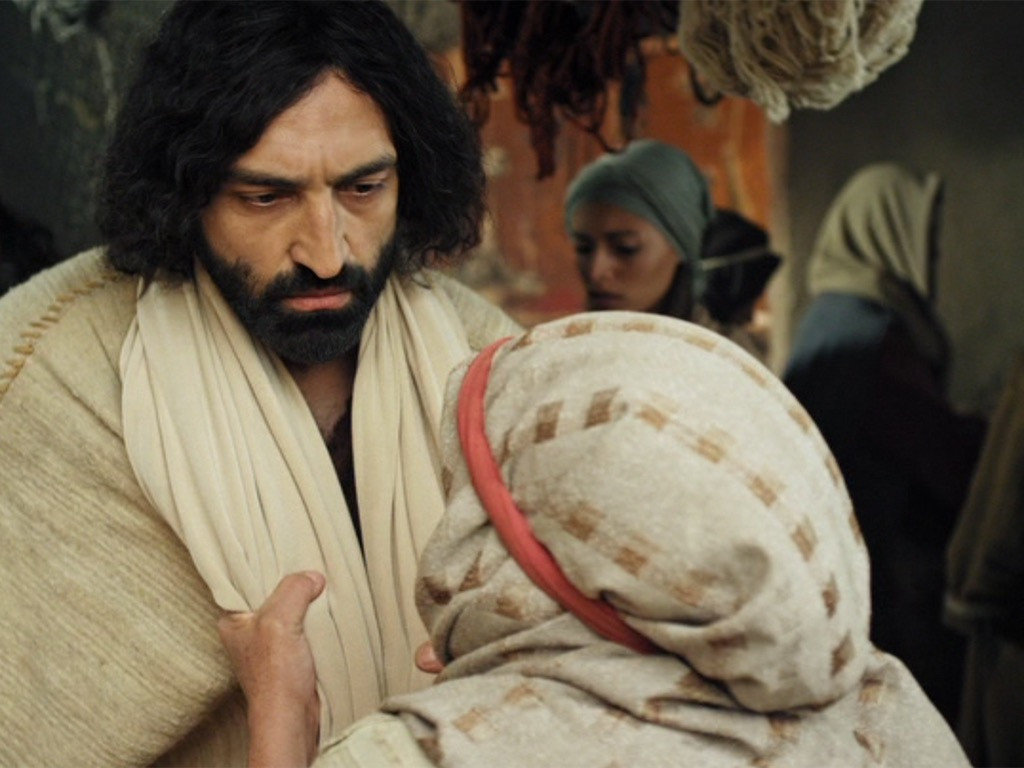The Syrophoenician Woman
In Matthew 15 and Mark 7, the Gospel writers record the story of Jesus healing the possessed daughter of a Syrophoenician woman. This story has been taught and read so many times that some folks simply take it for granted. That should not be the case. Just the other day I found a blog that claimed in all seriousness that Jesus called a woman a dog. And then presented a case for the insensitivity of the remark. That is religious thinking. If you KNOW Jesus, you are far less likely to make bad assumptions like that. Scripture interprets Scripture, meaning that the entire Word helps you understand individual passages, events, and verses. And if you are a Believer, the Holy Spirit resides in you to lead you to the Truth. So when you read or hear something that seems out of character from Jesus for instance, you should sense there is a problem in your spirit. It is likely that someone has “missed” it. Jesus, our Savior and Lord, Love Himself, did not call the woman a dog. Strap in and prepare, as we take a closer look at this wonderful story.

21 Then Jesus left Galilee and went north to the region of Tyre and Sidon. 22 A Gentile woman who lived there came to him, pleading, “Have mercy on me, O Lord, Son of David! For my daughter is possessed by a demon that torments her severely.”
Matthew 15:21-23 NLT
I do believe some people get lazy when it comes to some of the events in Jesus’ life. They have read them so many times, heard the same religious lesson from teachers and pastors, and they truly think they have heard everything. But that’s not how the Bible works. God’s Word is ALIVE, full of POWER and TRUTH. There is REVELATION in every jot and tittle. God can always reveal something new about a story, or how it might apply to a situation in your life. (Psalm 119:129-136, John 15:1-27, 17:14-24, 2 Timothy 3:14-17, Hebrews 4:10-16)
Consider the Syrophoenician woman. Her story actually begins earlier. The fame of Jesus as a miracle worker had spread throughout the area, even as far as Syrian Phoenicia. People from Tyre and Sidon traveled to hear Him and be healed. (Mark 3:7-8, Luke 6:17-19) She exhausted all the options in her world, both medical and religious. She was desperate to get the evil spirit out of her daughter. It was at this point that she heard Jesus was in the area.
The area of Phoenicia is roughly the equivalent of modern Lebanon. Originally held by the Phoenicians, who were then conquered by Alexander and the Greeks. At the the time of Jesus, Roman rule prevailed, and Phoenicia was a part of the Syrian province. This district was called Syrophoenicia to distinguish it from the North African Lybophoenicia. Within the area were the two large ports of Tyre and Sidon. The woman lived in this area. This is how she got her name. She was not a Jew, but a Gentile, possibly Greek or Canaanite, or some combination. This part is unclear, and not as important as the fact that she was a Gentile. She likely spoke Greek, or was familiar with their language and way of thinking since the Greeks had Hellenized the areas they conquered under Alexander the Great. And it remained under Greek influence, Ptolemaic Egypt and the Seleucid Kingdom, for over 250 years until Rome conquered the area in 64 BC. Remember that as we move on.
Why Did Jesus Travel To The Area Near Tyre And Sidon
24 And Jesus arose and went away from there to the region of Tyre and Sidon. And He went into a house and did not want anyone to know [that He was there]; but it was not possible for Him to be hidden [from public notice].
Mark 7:24 AMP

This was not a short trip, about a day’s journey by foot, including time for breaks and food. The text implies that they were going there possibly to relax, maybe take some time teaching His disciples. By this time in His ministry, traveling quietly was impossible. So let me suggest an alternative. This was a DIVINE APPOINTMENT with the Syrophoenician woman. Think about the Samaritan woman at the well, and how Jesus HAD to go through Samaria and met her. And look at the results – her whole village, Sychar, was saved. The Syrophoenician woman heard of Jesus, and that little tiny seed of hope was taking root in her spirit. And faith is what pleases God. (Matthew 17:20-21, Hebrews 11:6)
When Jesus arrived in the region of Tyre and Sidon, the Syrophoenician woman was determined to find Him and get her daughter healed. Folks might question whether this woman was the reason for this journey, so consider it this way. Did Matthew or Mark record any other event that happened to the group while in the Tyre area? It is VERY possible Jesus ministered and/or healed many people while there. That was quite common. But neither Gospel records anything of that nature, not even a generic, “He healed many” type of comment. They focus exclusively on the Syrophoenician woman. The Holy Spirit determined this event was important enough to record it in the Bible for us, and if anything else did happen, it was not considered worthy to be mentioned. That’s pretty solid evidence that we should study this event carefully.
Jesus And The Syrophoenician Woman

22 And, behold, a woman of Canaan came out of the same coasts, and cried unto him, saying, Have mercy on me, O Lord, thou Son of David; my daughter is grievously vexed with a devil.
Matthew 15:22–24 KJV
The disciples had just witnessed an intense discussion between Jesus and the religious leaders on what makes people unclean. The key point of the discussion was, “But those things which proceed out of the mouth come forth from the heart; and they defile the man. For out of the heart proceed evil thoughts, murders, adulteries, fornications, thefts, false witness, blasphemies…” (Matthew 15:18-19) This was revolutionary, dare I say Divine Truth. It literally turned the religious world upside down, as they were so focused on the outside, they really never considered the inside at all. Did His disciples understand the lesson? That would be put to the test with the arrival of the Syrophoenician woman. She was not Jewish, yet still called Jesus Son of David – a Messianic title. Had she read the Septuagint, the Greek Old Testament published some 300 years earlier? Or heard about the promised Messiah as the Samaritan Woman at the well? This approach was wrong, since she was not a Daughter of Abraham, or Israel by flesh. That would come later by faith for Gentiles. Jesus did not even bother to reply to her initial plea. (Ephesians 1:1-23, 2:1-22, Galatians 3:6-14)
Changing her tactics somewhat, she begged Jesus and the disciples to do something, to have mercy on her. The latter were annoyed with the commotion. Some commentators have suggested that the disciples asked Jesus to heal her. I do not see that in the text. It seems clear they were annoyed with her crying out and wanted it to end. It was then that Jesus said, “I am not sent but unto the lost sheep of the house of Israel.” (Matthew 15:24) This was clearly addressed to the disciples, but of course the woman heard His words. His answer was reflecting their attitude towards people who were not Jews. This miracle would obviously change this woman’s life, but also be a valuable lesson for his disciples.
The woman decided to try a slightly different approach, worshiping Jesus and pleading for help. This time Jesus addressed her directly, “It is not right to take the children’s bread and throw it to the little dogs.” (Matthew 15:26) She thoughtfully considered His statement and then replied, “Yes, Lord, yet even the little dogs eat the crumbs that fall from the children’s table.” (Matthew 15:27) Jesus answered, “O woman, great is your faith! Be it done for you as you wish. And her daughter was cured from that moment.” (Matthew 15:28)
Think about this exchange. Read it a couple of times. And we will unpack all that was happening.
Figure Hypocatastasis Or Implication
The ancient Greeks had nearly 200 figures of speech, or rules that governed language and meaning. Let me quote E.W. Bullinger, who literally wrote the book – Figures of Speech Used In The Bible.
Applied to words, a figure denotes some form which a word or sentence takes, different from its ordinary and natural form. This is always for the purpose of giving additional force, more life, intensified feeling, and greater emphasis. Whereas to-day Figurative language is ignorantly spoken of as though it made less of the meaning, and deprived the words of their power and force. A passage of God’s Word is quoted; and it is met with the cry, Oh, that is figurative, implying that its meaning is weakened, or that it has quite a different meaning, or that it has no meaning at all. But the very opposite is the case. For an unusual form (figura) is never used except to add force to the truth conveyed, emphasis to the statement of it, and depth to the meaning of it. When we apply this science then to God’s words and to Divine truths, we see at once that no branch of Bible study can be more important, or offer greater promise of substantial reward.
Ethelbert William Bullinger, Figures of Speech Used in the Bible (London; New York: Eyre & Spottiswoode; E. & J. B. Young & Co., 1898), Introduction 2
Such is the case with Jesus’ response to the Syrophoenician woman. We cannot truly understand their interaction without understanding the Figure employed, which makes their banter so wonderful. He used neither a simile (like a dog), or metaphor (is a dog). He used the figure Hypocatastasis; or, Implication, which simply means a declaration that implies the resemblance or representation, or comparison by implication. It was intended to arouse her Greek mind, and it worked perfectly. She wasn’t insulted, as she understood the implication, and saw her faith opportunity. Even the little dogs, the puppies under the table, received some BREAD, that was given to the children. This was sometimes by accident, but often by compassion, with the children sharing their bread. He was not calling her a dog in the negative sense, and certainly not the wild dogs so hated in the Middle East. It was implied, and was spoken in a way that even the disciples could understand. Yes, Jesus was there FIRST for the Jews. But God’s Mercy is for ALL that truly BELIEVE in Him.
A final thought from Bullinger on the Syrophoenician woman.
The woman, unlike the disciples (in chap. 16:5-12), at once saw and understood what the Lord implied, viz., that it was not meet to take that which belonged to Israel and give it to a Gentile (or a dog of a Gentile as they were called by the Jews), “And she said, Truth, Lord.” What she felt is clear: “It is quite true; Thou art perfectly right; I called Thee ‘the Son of David,’ and deserved no answer; I pleaded for ‘help’ and said: ‘Lord, help me’; but I made no confession as to who the ‘me’ was: no acknowledgment of my unworthiness and unmeetness as ‘a dog of the Gentiles.’ ” “Truth, Lord: yet the dogs eat of the crumbs which fall from their master’s table. Then Jesus answered and said unto her, O woman, great is thy faith.”
ibid. p. 744
So, it is “great faith” to understand what the Lord implied by the use of this beautiful figure, and it is “little faith” not to understand it! Even though the former was spoken of a Gentile woman, and the latter of the apostles of the Lord.
The Centurion And The Syrophoenician Woman
For those still processing the seeming reluctance of Jesus to grant the woman her request, compare and contrast another encounter Jesus had with a Gentile, the Centurion’s Servant.
27 She replied, “That’s true, Lord, but even dogs are allowed to eat the scraps that fall beneath their masters’ table.”
28 “Dear woman,” Jesus said to her, “your faith is great. Your request is granted.” And her daughter was instantly healed.
Matthew 15:27–28 NLT

Both the Centurion and the Syrophoenician woman were Gentiles. Both came to Jesus out of LOVE for another. The Centurion realized immediately based on religious law he was unworthy, or did not qualify. He simply BELIEVED Jesus would say the Word and his servant would be healed. He understood authority and power, and he recognized both in Jesus. The Centurion would not even allow Jesus to come to his home, he didn’t need to see any theatrics, he knew the Word was more than enough to make his servant whole. (Matthew 8:5-13, Luke 7:1-10)
The woman came begging, which has its roots in fear and doubt. Jesus had to “adjust” her thinking. Begging is not Believing. When you come to God, you must Believe that He is, and KNOW that He is a REWARDER of those who diligently seek Him. God knows what we need before we even ask. So it makes little sense to bring Him the problem. That was why he “rebuked” Mary at the wedding in Cana. She brought the problem of the wine running short. Jesus knew everything and already had a solution. He needed her faith. In a similar way, the Syrophoenician woman came to Him uncertain how to approach. First appealing to Him as Son of David, but she was a Gentile. And she was begging and pleading. Jesus had to calm her emotions, as fear was keeping her from her miracle. Fear is the opposite of faith. So Jesus provoked her a bit, pointing out that she was not a Jew. And then, using a baseball analogy, gave her the perfect pitch. And she knocked it out of the park. No, she was not Jewish. She had no claims under the Covenant. All she had was the love for her daughter and a seed of faith in the love of her Creator. She could not earn, buy, or even con her way to receiving her miracle. All she could do was BELIEVE. The BREAD of Life was for everyone, even those who desired it early. (Psalm 37:1-5, Matthew 6:6-8, 10:26-31, Luke 12:22-34, John 6:27-48, Philippians 4:4-9, Hebrews 11:1-6)
Both Gentiles received their miracle. Jesus said they both had “Great Faith” – something He did not say often. There was NO delay, even though neither were Jewish. Consider His words with that in mind. Jesus spoke the Truth. He was sent to Israel first. But that did not prevent Him from showing Grace to Gentiles. His statements were made to bring out the Syrophoenician woman’s faith, and shut down that begging spirit. Don’t get bogged down by the dog or crumbs comments. God does not deal in crumbs, nor does He see anyone as a dog. There is more than enough of the Living Word, Jesus, THE Bread of Life, to go around. God wants all men to be saved, and to come unto the knowledge of the truth. (John 6:49-69, Luke 11:11-13, 1 Timothy 2:1-7)
It also should be noted the precedent set by Elijah. During a famine, God sent him to a widow in Zarephath. Oddly, this was between Tyre and Sidon, in the same area where Jesus met the Syrophoenician woman. The widow was preparing a last meal for herself and her son when Elijah arrived. He asked her to serve him first, promising that the meal and oil would not run out until the rain returned. And so the three survived for many days on this miraculous provision. And during his stay, her son died. But Elijah prayed, and his life was restored. Something that significant was likely shared among many in the area for many generations. Its possible even the Syrophoenician woman heard the story. A little speculation, but it is an interesting parallel. Jesus would use this event as a teaching point for the religious leaders. There were many widows in Israel in the days of Elijah, when the heavens were closed up for three years and six months, so that there came a great famine over all the land. And yet Elijah was not sent to a single one of them, but only to Zarephath in the country of Sidon, to a woman who was a widow. After enduring so much, famine, miraculous provision keeping Elijah and the widow’s household fed, and then seeing her son die, but yet miraculously raised, dramatically changed the widow. Who was she in the great scheme of things? Why did she deserve such mercy? Consider her final comment recorded in Scripture. “Now by this I know that thou art a man of God, and that the word of the LORD in thy mouth is truth.” (1 Kings 17:1-24, Luke 4:24-26)
For additional information on this see the following: Syrophoenician Woman and Jesus, Women And Their Purpose In The Body of Christ
Images:www.LumoProject.com




